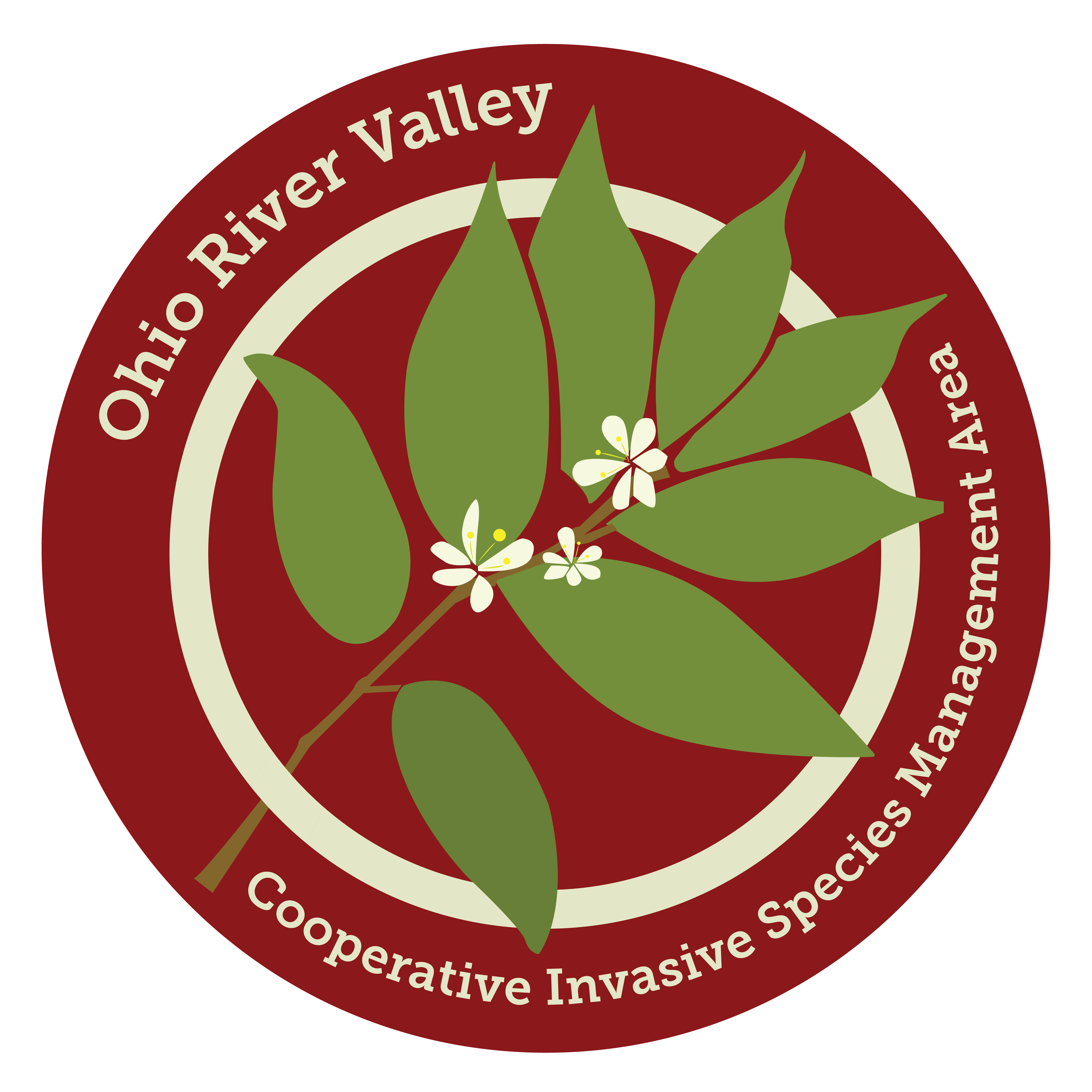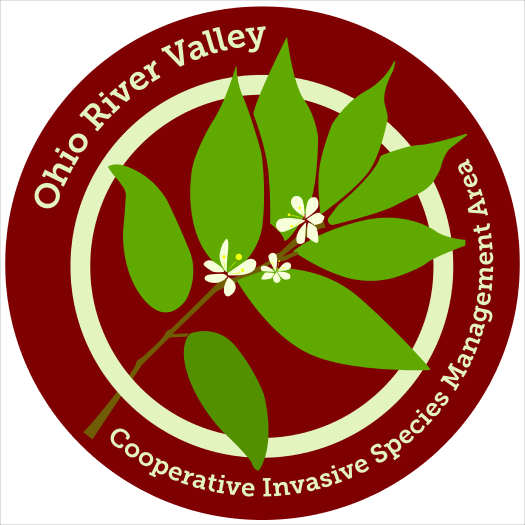
The Ohio River Valley Cooperative Invasive Species Management Area (ORV CISMA) is a coalition of nonprofits, agencies and businesses working to control and remove invasive species in a 22-county area in the Ohio River Valley. Originated in 2016, it draws upon the technical expertise and knowledge of individuals with decades of experience in natural resource management and invasive species control.
Its premise is that because invasive plants are expanding across our landscapes faster than people can stop them, a coordinated approach offers the best chance of managing their spread. Non-native, invasive plants compete with and often crowd out native ones, leading to decreased biodiversity, poorer habitats for wildlife (including the pollinators that help our food supply) and lower water quality, among other issues. Examples of invasive plants in the Ohio River Valley
include Amur honeysuckle, Callery pear, Autumn olive, lesser celandine and wintercreeper.
The ORV CISMA consists of urban, suburban and rural areas spread throughout the Ohio River Valley. Of the 22 counties covered by the CISMA, nine are in Ohio (Adams, Brown, Butler, Clermont, Hamilton, Highland, Montgomery, Scioto and Warren); seven in Kentucky (Boone, Bracken, Campbell, Gallatin, Grant, Kenton and Pendleton); and six in Indiana (Franklin, Dearborn, Ohio, Ripley, Jefferson and Switzerland).
Member organizations are Boone, Campbell and Kenton County Conservation Districts; Boone National Forest; Natorp’s Nursery; Great Parks of Hamilton County; Cincinnati Parks; Clermont County Park District; Ohio Department of Agriculture; Ohio Invasive Plant Council; Little Miami Conservancy; Oxbow Inc.; Kentucky Nature Preserves Commission; and Cincinnati Nature Center.
What is a CWMA or CISMA?
A Cooperative Weed Management Area (CWMA) or Cooperative Invasives Species Management Area (CISMA) is a partnership of federal, state, and local government agencies, tribes, individuals, and various interested groups that manage invasive species (or weeds) within a defined area. In different parts of the country, CWMAs are known by other names, including: Cooperative Invasive Species Management Area (CISMA), Partnership for Regional Invasive Species Management (PRISM), Weed Management Area (WMA), Invasive Species Teams, and Invasive Species Partnerships. Although these groups may be organized differently, they share six basic characteristics:
- CWMAs operate within a defined geographic area, distinguished by a common geography, weed problem, community, climate, political boundary, or land use.
- CWMAs involve a broad cross-section of landowners and natural resource managers within its defined boundaries.
- CWMAs are governed by a Steering Committee.
- CWMAs make a long-term commitment to cooperation, usually through a formal agreement among partners.
- CWMAs have a comprehensive plan that addresses the management or prevention of invasive species within its boundaries.
- CWMAs facilitate cooperation and coordination across jurisdictional boundaries.
CWMAs bring together local citizens, landowners, nonprofit organizations, industry, and city, county, state, tribal, and federal representatives to work towards a common goal—effective control of invasive species.

